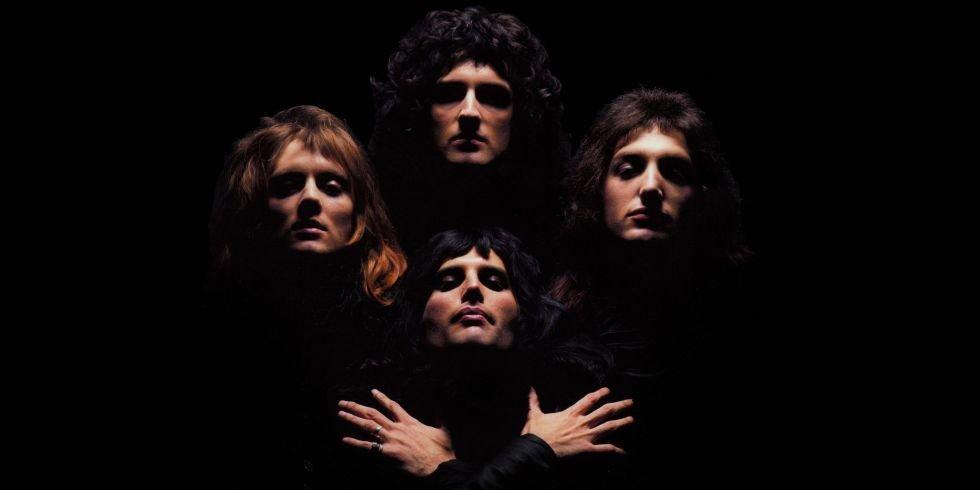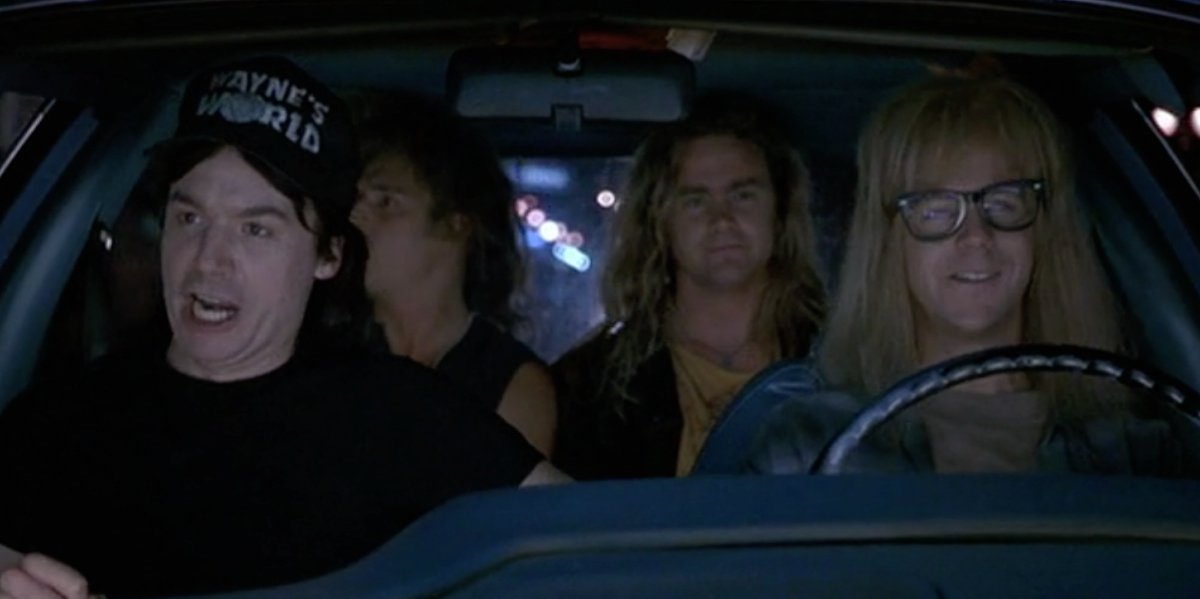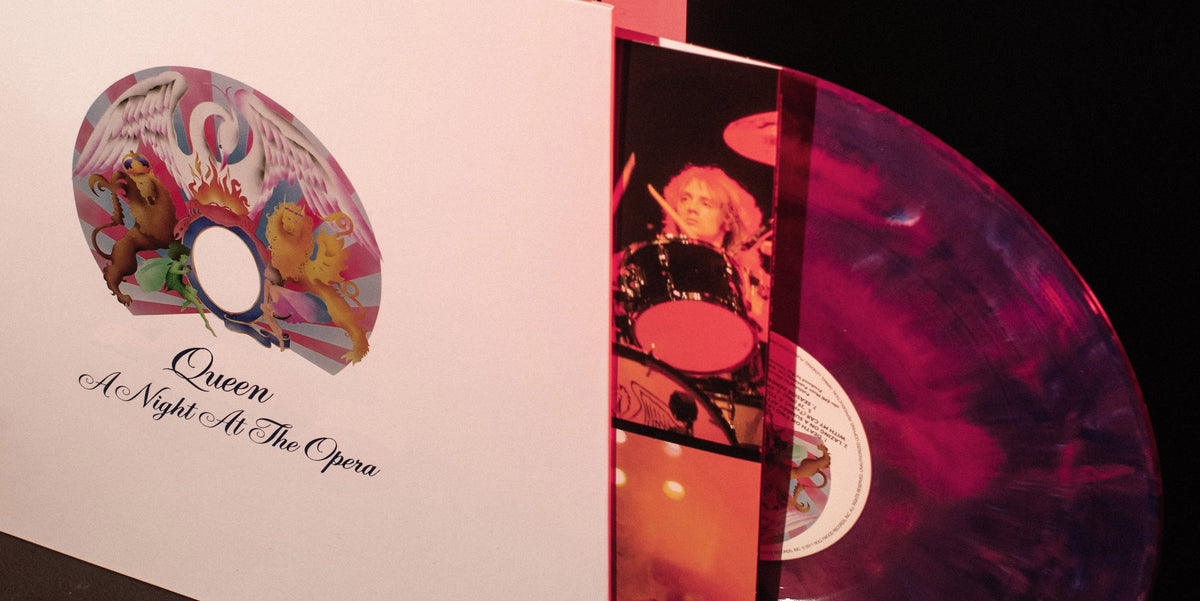Never Let You Go: How Queen Went All Out, And Lived Forever
Read The Liner Notes For Our New Reissue Of Queen’s ‘A Night At The Opera’
No album ever came to slay quite like A Night At The Opera came to slay.
At the time of its release in November 1975, it was the most expensive album ever produced — and from the overdubs to the flanging vocal effects, you can hear every penny. Though lead singer Freddie Mercury, guitarist Brian May, drummer Roger Taylor and bassist John Deacon had only been performing as Queen for four years at this point in time, the band already had a reputation for excess, and from the first foreboding notes of “Death On Two Legs” — a searing indictment of the band’s former manager, a “fuck you” delivered with the swoosh of a cape rounding a spiral staircase, candlestick in hand — to the masterful instrumental version of “God Save the Queen” that closes the album, A Night At The Opera was a triumphant celebration of the particular way Queen stayed doing the most.
A Night At The Opera is easy to place on a sonic timeline, unmistakably the creative output of the mid-1970s — yet like all of Queen’s music, it possesses its own brand of timelessness, remaining culturally relevant in the broadest ways to the widest audience. Queen were not relatable — neither in the image that they cultivated, nor in the people they actually were — but no one is immune to the allure of a true visionary or the powers of a great performance. And so: when Wayne pushed the cassette tape into Garth’s tape deck, “Bohemian Rhapsody” reached a new generation; that iconic scene in Wayne’s World pushed the song to No. 2 on the pop charts nearly 20 years after its first release. It’s hard to hear “You’re My Best Friend” without seeing in your mind’s eye a supercut of all the moments in film and television it has soundtracked — running the gamut from The Simpsons to My Name Is Earl to Shaun of the Dead. And I’ll never stop saying this: “’39” walked so Interstellar could run. Hope you realize it too, Christopher Nolan.
Few things inspire awe like seeing an exceptionally talented person performing at their peak; A Night At The Opera is Queen’s version of the 100-point Wilt Chamberlain game, Serena Williams’ 2013. In writing and recording their previous album (and first significant commercial success), Sheer Heart Attack, they discovered what they could do better than any other band; A Night At The Opera found Queen building on those creative breakthroughs and presenting them to the world in their most refined forms. To put it biblically, “Bring Back That Leroy Brown” begot “Seaside Rendezvous” and “Good Company.” “Killer Queen” and “Lily of the Valley” begot “Bohemian Rhapsody.” Amen.
A Night At The Opera is stylistically nimble, genre-curious, eager to chase every spark of an idea with a can of gasoline. Like few other bands before or since, Queen understood how to weave everything they loved — opera, prog rock, showtunes, Dixieland jazz, arena rock, etc. — into a cohesive and singular sound. On this album, they found their voice and it turned out their voice was a choir.
A Night At The Opera was Queen’s crowning achievement, but it wasn’t the first time the band enjoyed an appreciative audience. First-hand accounts from music journalists who saw them in their nascence suggest Queen didn’t exactly experience an awkward adolescent stage; from the outset, they sounded close to what they’d become at the height of their powers, like a knock-kneed foal ambling around the pasture minutes after being born. Two years after the band’s first show, they’d signed a deal with Trident Studios/EMI, were recording on the same equipment as Elton John and the Beatles and had joined Mott the Hoople’s U.S. tour. Their time on that tour was cut short — May was diagnosed with hepatitis and became too sick to continue performing — and upon their return to England, they recorded Sheer Heart Attack start-to-finish in two weeks. It would be band’s first taste of mainstream success and a premonition of what was to come, creatively.
Despite their success, Queen were broke. Early in their career, they signed a predatory contract stipulating that the band would produce albums for its production company, Trident Studios, which would then sell them to their record company, EMI. In practice, it meant almost none of the money Queen’s albums earned ended up in the band’s hands. Their singles were climbing the charts, yet Deacon couldn’t get approved for a loan to put a deposit on a house and Taylor was asked to stop drumming so enthusiastically because the band couldn’t afford to buy new drumsticks if he happened to break one. Queen eventually negotiated their way out of this contract and into an agreement with Elton John’s manager, John Reid, who told them to “go into the studio and make the best record you can make.” So they made A Night At The Opera.
Armed with this context, listeners can find new ways to appreciate this album. There was so much pressure riding on it — if it hadn’t been a resounding success, Queen might have disbanded — but in a way, the situation must have been liberating. Knowing it could very well be the last chance you get to be heard, why not take some risks — show the world what you’ve got, push toward the fullest, truest expression of your music? It certainly explains why A Night At The Opera is so thoroughly uncompromising — it’s truly an album that demands you meet it on its own terms — and it speaks to Queen’s prodigious talents that they were able to create something thoroughly unique (and rather unmarketable) that became so universally beloved. Mercury famously vowed to “bring ballet to the masses,” and here, he made good on that promise. From “Death on Two Legs,” his bombastic middle finger to their former manager (who threatened the band with a lawsuit after hearing the song), to the graceful “Love of My Life,” written for his longtime girlfriend-cum-platonic soulmate Mary Austin, Mercury’s contributions demonstrate his willingness to find the through-line from Liza Minnelli to Led Zeppelin, vaudeville to vamp — and the ability to do so without churning out a messy or derivative end product. His “Lazing on a Sunday Afternoon” and “Seaside Rendezvous” and May’s “Good Company” run vaudeville, show tunes and Dixieland jazz through a blender; the results are whimsical and light, but deceptively complicated in their construction. They’re rich with multi-tracked harmonies (on “Seaside Rendezvous” Mercury even imitates woodwind instruments with his voice) and inventive instrumentation: ukuleles, kazoos, Mercury and Taylor tapping on the mixing board with thimble-covered fingers to mimic tap-dancing.
At every turn, A Night At The Opera is open to possibility, jaw-droppingly inventive and attentive to detail. Its songs are as complicated as classical compositions, yet still catchy and memorable; recognizably pop songs, but pop songs written by titans instead of mortals. May’s arena-ready “Sweet Lady” shows a song in ¾ time can still go hard, and his prog masterpiece “The Prophet Song,” drenched in apocalyptic imagery and written after a hepatitis-fueled fever dream, deploys scenery-chewing guitar solos and a disorienting coda that layers Mercury’s a cappella vocals through tape delay. His “’39” is something like a heartfelt sea shanty for the year 3000, finding the through-line between his twin areas of expertise — astrophysics (in which he holds a doctorate) and songwriting — by imagining time dilation’s devastating consequences.
The album isn’t just the Mercury and May show, though. Deacon was the man behind smash hit “You’re My Best Friend,” his first composition to be released as a single and a song that immediately claimed a seat at the table in Pop Culture Valhalla, and Taylor wrote “I’m In Love With My Car” in honor of Queen roadie Jonathan Harris and his beloved Triumph TR4. Allegedly, Taylor shut himself in a cupboard at the recording studio until the band agreed to make it the B-side to “Bohemian Rhapsody” — and it proved to be the right decision. Its campiness still connects, right down to the revving sounds courtesy of Taylor’s own car: a cheeky send-up of machismo that also lovingly buys into it.
And of course, there’s “Bohemian Rhapsody.” It took three weeks, five different studios, and so many overdubs the original tape is nearly see-through to bring the album’s piece de resistance and most enduring touchpoint to fruition, during which time the band and producers simply called it “Fred’s Thing.” The song is the apotheosis of everything the band (and particularly Mercury) were working toward, one perfect expression of potential realized — but it made Queen’s manager, producer and promoter nervous, all of them unsure whether it was a work of genius or self-indulgent madness (correct answer: Queen are both in the best ways). Because the band’s handlers knew Queen’s career and financial solvency depended on this album’s success, they let their anxiety dictate their feedback. Queen were pressured to cut down the length, remove movements and make it more digestible to make it more radio friendly. At every turn, the band pushed back, and once released as a single, it shot to the top of the charts and within two months, sold a million copies. The song’s complexity continued to pay dividends: Queen were invited to perform the song on Top of the Pops, but couldn’t reproduce the studio version live — so they spent nearly £4500 to create a music video to play on the show instead. The final product set a new precedent for the music video as short film.
I’m convinced “Bohemian Rhapsody” will stay fresh forever. It possesses a sparkle that doesn’t lose luster with time passed or number of times heard; you can see the seams in its patchwork but it doesn’t diminish its elegance or completeness. It’s a decisive expression of what it feels like to be confused: caught between joy and fear, shame and pride, reconciling how it feels to be free with how hard everyone else will make it for you. Like the band itself, it’s untouchable but still feels human.
A Night At The Opera is a perfect album — not solely because of Queen’s creativity and talent, but because of the band’s supreme self-confidence, ambition and absolute unwillingness to compromise their vision: the soft skills that make the difference between languishing in anonymity and becoming canon. If Queen had been willing to accommodate their handlers, to let committee and consensus drive their vision, I probably wouldn’t be writing this essay today. The band’s savvy bullshit detector kept them from compromising their art to assuage their handlers’ worries that the public either wouldn’t understand or wouldn’t respond favorably to Queen’s radical approach to arena rock. That anxiety was understandable — their one job was to make the band popular — but doesn’t hold up under even the slightest interrogation. The very thing Queen was best at was making the difficult easy. Ballet for the masses, darling.
The criticism most often levied against Queen is that they’re all style and no substance: that the lyrics are clever without saying anything meaningful, that they skirt feelings and truths rather than grapple with them and that they got away with it because of their unparalleled musicianship. I would argue that Queen’s style was their substance: the charisma it took to bend an audience to their will, the relative ease with which they created a sound so distinctive that no one can pay the slightest homage to it without sounding like a blatant rip-off. Queen was a carefully orchestrated, flashy, excessive performance — but it wasn’t just performance as an end in itself. At least for Mercury, performance was a statement: a way to simultaneously evade the truth and express his truth.
It’s hard to talk about Queen without discussing Mercury’s sexuality — specifically, the way he addressed it by never directly addressing it. In the lead-in to his close reading of “Bohemian Rhapsody” in My Life As A Goddess: A Memoir Through (Un)Popular Culture, writer/comedian Guy Branum describes the process of coming out as:
“…an act of graphic emotional nudity with no poise or sophistication. It’s snot-dripping-out-of-your-nose emotions, and gay men don’t like those. We like watching Viola Davis experience them, but only because we never let ourselves be that honest. We are creatures with the option of hiding, and even when we’re trying to be frank about a moment like this, we’ll always retreat to the safety of a bland smile and presumed normalcy.”
Branum, like others before him, posits that “Bohemian Rhapsody” is Mercury’s coming-out story — and it’s telling that his “act of graphic emotional nudity” still feels evasive and performative, using fantastical characters as a mouthpiece for uncomfortable feelings and burying it all under dizzying theatricality and Byzantine production. You don’t need to have read Judith Butler to intimately understand that identity is a performance — and that this can be stifling, but also help you discover outlets for self-expression that feel safer. Everything about Mercury stuck out: his talent, his family’s faith, his heritage, his sexuality — even his teeth. I imagine he may have felt the need to perform to turn himself — a person with the potential to never fit in anywhere — into someone who fit in everywhere. And on the strength of his talent and his charisma, he was able to stand in front of crowds exceeding 130,000, all of them cheering for a queer Persian man wearing eyeliner and hot pants and using his signature stick microphone like a phallic prop — all the while declining to comment on his sexuality. It’s triumphant and sad, just like the best song he ever wrote.
Queen named this album after the Marx Brothers’ film A Night At The Opera. In the film, a chorister disguises himself so he can engineer an opportunity to steal the girl and the spotlight from the opera company’s hot-shot tenor. Onstage, the chorister ends up outshining the star, winning the love of the audience — and his love interest, too. Even though the album is only named for the movie because the band happened to watch it as they were recording, I can’t help but notice the parallels between that plot point, Mercury and the album itself. Perform an identity that gets you in the door, then unapologetically shoot your shot.
**You can sign up to receive our exclusive edition of A Night At The Opera right here. **
Susannah Young is a self-employed communications strategist, writer and editor living in Chicago. Since 2009, she has also worked as a music critic. Her writing has appeared in the book Vinyl Me, Please: 100 Albums You Need in Your Collection (Abrams Image, 2017) as well as on VMP’s Magazine, Pitchfork and KCRW, among other publications.
Related Articles
Join the Club!
Join Now, Starting at $36Pages







